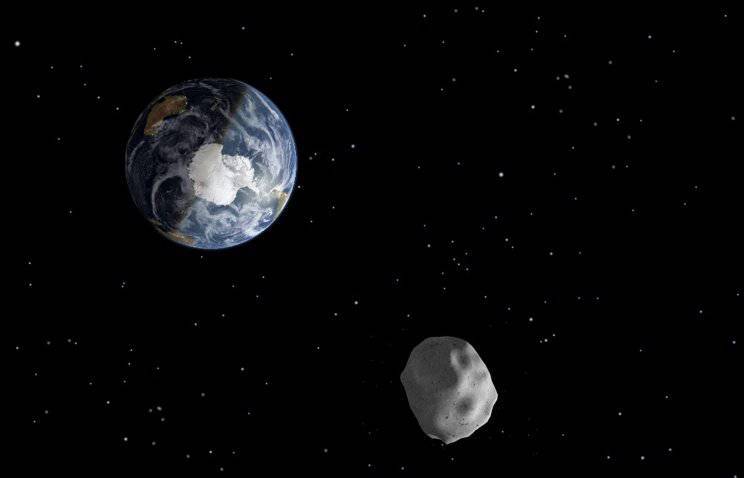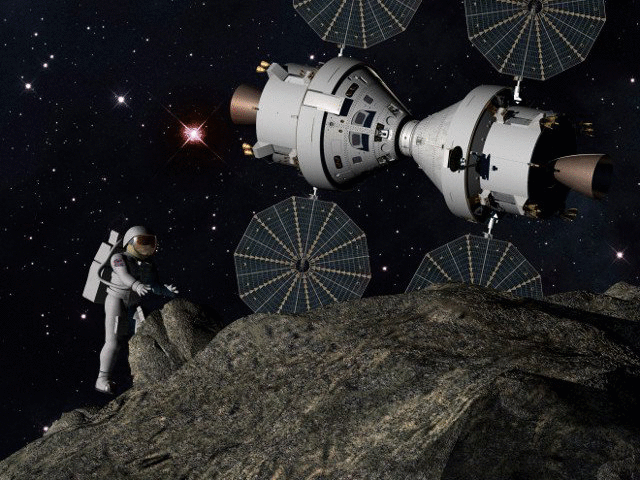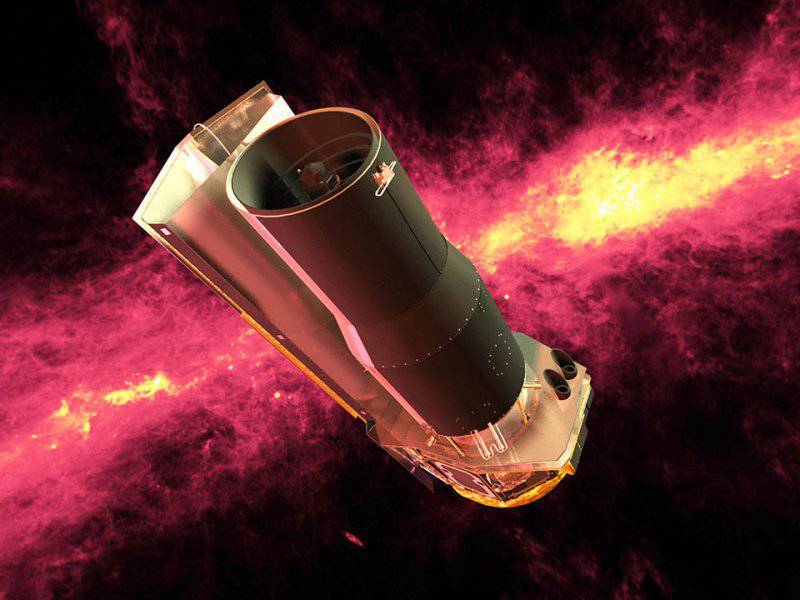NASA has selected an asteroid for the landing of astronauts
Search for a suitable asteroid
The search for a suitable asteroid was launched as part of the Asteroid Redirect Mission (ARM) program, which the US space agency reported in March 2013. One of the first goals of observation was a small asteroid 2011 MD. Initially, scientists believed that its diameter was about 10 meters. Such dimensions made it almost an ideal object for the ARM program. The essence of the program is to “catch” and deliver an asteroid weighing up to 500 tons to the Earth orbit. To observe the 2011 MD asteroid, the telescope research team spent almost 20 hours.
Sensitivity, resolution and other characteristics of the Spitzer telescope are several times higher than many other infrared telescopes that people have today. Thanks to this telescope, American scientists were able to follow how the asteroid 2011 MD is moving in its orbit, and also accurately determined its size and shape, mass and density. Even if scientists had high-quality images of this celestial body, it would be very difficult to know all this. Mainly due to the irregular shape of the asteroid, as well as the fact that its manner of rotation around its own axis may change under the influence of the heating of its surface, the pressure of sunlight and a number of other factors. In order to set all parameters as precisely as possible, scientists from NASA had to create a full-fledged computer model of an asteroid, which took about 10 operating hours to calculate with the help of a supercomputer.

As a result, it turned out that the 2011 MD asteroid is not at all like what astronomers had imagined it all of previous years before its detailed study. In fact, this celestial body turned out to be significantly smaller than it looks. The diameter of the asteroid is equal to the total 6 meters, and not 10, as previously thought. In addition, its mass and density were surprisingly low - about 50 tons and 1,1 grams per cubic meter. See. Such data greatly surprised scientists, the obtained density values are more typical for the planets of the solar system - gas giants, which include Saturn or Jupiter, and not for rocky asteroids.
Scientists give this two possible explanations, one of which is relatively “good” and the second is “bad” and is not very suitable for the implementation of the plans of the American Space Agency. In the “good” case, the 2011 MD asteroid for the most part consists not of rocky mountain rocks, but of voids that can occupy up to 65% of its volume. Speaking figuratively, from the inside this asteroid can resemble a piece of good Swiss cheese with huge pores or a very loose pile of garbage. All this does not interfere with NASA’s plans to capture the asteroid with any spacecraft as part of the ARM project or an astronaut landing on its surface. In this case, the asteroid may have insufficient strength and just fall apart during the implementation of such operations with it.
If the “bad” scenario is confirmed, in which 2011 MD is not a solid asteroid, but a kind of “swarm” consisting of microscopic dust particles that surround a dense core, the task becomes more complicated. In this case, it will be much more difficult to capture the asteroid and deliver it to the lunar orbit. However, in any case, such studies can help scientists update their ideas and knowledge about microasteroids around our planet, to understand the reason for their appearance.
In addition to directly collecting scientific information and valuable samples for conducting a comprehensive analysis on Earth, NASA scientists have other plans for the microasteroid. Before sending a manned mission to it, scientists plan to change the orbit of a given celestial body, forcing it to rotate around the natural satellite of our planet at an altitude of approximately 75 thousand kilometers above the surface of the Moon. For these purposes, Americans expect to use a robotic spacecraft.
Manned flight to asteroid
It is planned that already in 2019, an autonomous spacecraft will be sent to the 2011 MD asteroid, which will be able to throw a metal network on it (as American engineers themselves note, “throw it into the bag”) and drag the asteroid to a stable near-moon orbit. Around the middle of the 2020-s, it will be possible to send an already manned spacecraft with astronauts aboard to this small asteroid.
Another scenario suggests that not the asteroid as a whole will be delivered to the moon's orbit, but only a part of it - a large fragment the size of a large boulder. In this case, for the experiment, scientists will need a celestial body that exceeds the size of 2011 MD. According to NASA, 9 celestial bodies are currently on the list of candidates for such an experiment, but the search for new celestial objects is still ongoing.
NASA reports that they are planning to finally choose one of the two proposed options by the end of 2014. Until the end of this year, they plan to analyze a variety of concepts for creating an automatic spacecraft, which will “set a trap” for the microasteroid. It is also assumed that American astronauts will travel to the asteroid on the Orion spacecraft, which is being developed by Lockheed Martin. To launch this manned vehicle it is planned to use a heavy booster carrier SLS, which is being created by another giant of the American aerospace industry - the company Boeing. The US space agency hopes that later this system will be used to carry people to Mars.

William Gerstenmayer, who holds the position of Assistant Director of NASA, said last Thursday that the implementation of this project will help prepare a "manned flight into deep space", including Mars, and also serve to ensure the security of our home planet from asteroid danger. At the same time, a number of experts in the United States believe that this idea will hardly be justified from a financial, technical and scientific point of view. For this reason, congressmen have recently demanded that the space agency, after careful analysis by NASA, tell them how much the asteroid catch budget will cost and how this may affect other US space programs.
It is reported that the search for a suitable candidate among asteroids and the development of the necessary technologies in the budget of the US space agency for the 2014 fiscal year was allocated about 100 million dollars. According to NASA experts, the asteroid project as a whole will cost the 1,25 billion dollars in treasury, but independent experts warn that as a result, the costs of this program may be 2 times more.
Information sources:
http://itar-tass.com/nauka/1268301
http://rusplt.ru/world/asteroidi-10600.html
http://www.f1cd.ru/news/nasa_perevedyot_asteroid_na_novuyu_orbitu

Information